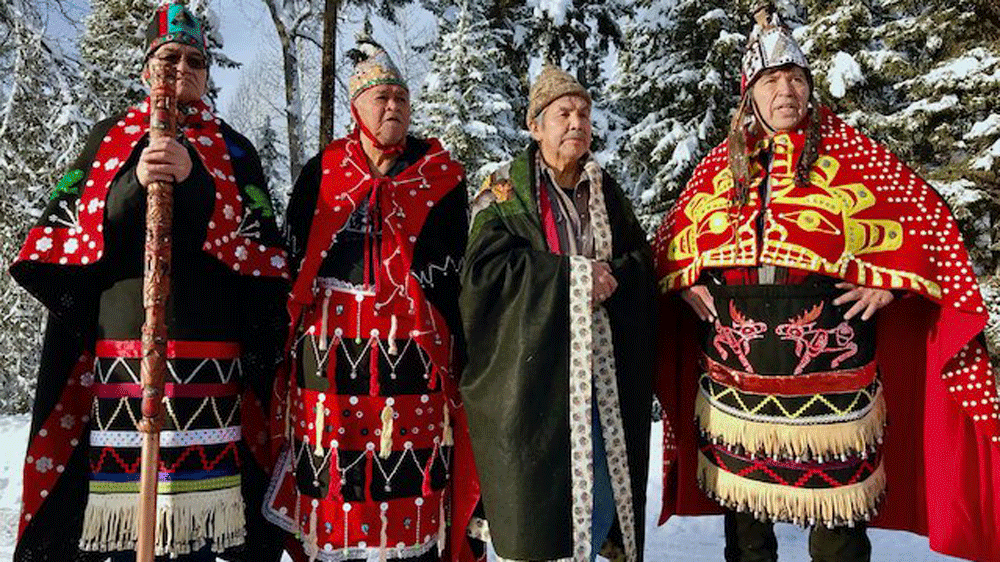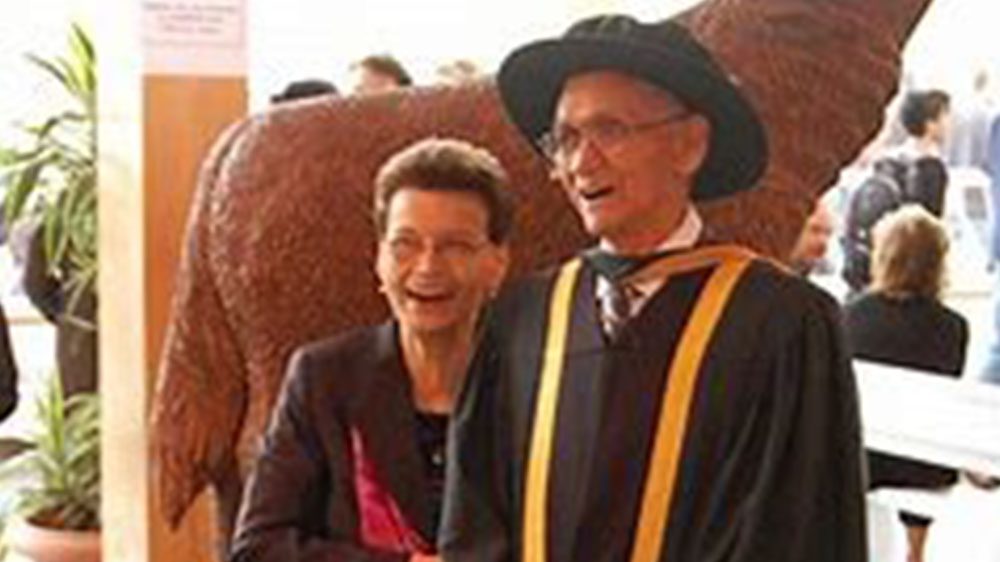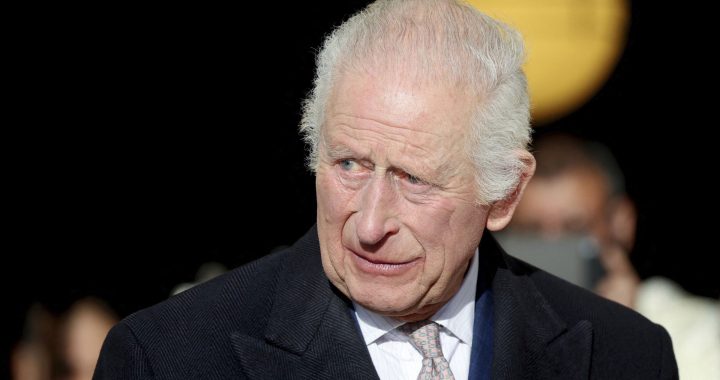
The conflict between the Wet’suwet’en Nation, the government and Coastal Gaslink didn’t happen overnight. They’ve been fighting for ownership of their language, culture and land since the day colonizers stepped foot on their territory. APTN News is producing three stories over the next week that will help fill in the gaps of how we got to where we are today. This is part three.
The tears eventually dried after B.C. Supreme Court ruled in 1991 that the Gitxsan and Wet’suwet’en nations did not own or have jurisdiction over their traditional territories.
The chiefs and Elders were upset but refused to give in. They appealed the decision.
“One of the things about our chiefs that I still praise to this day was their vision and their courage and their discipline,” explains Wet’suwet’en Hereditary Wing-Chief Satsan, whose other name is Herb George,
“When something happens, the human condition is to respond and blame. But what the Wet’suwet’en chiefs did was they said, ‘We’ve got to look back into what we’ve done here.’”
So they changed legal counsel and conducted a critical review of the court transcripts. Satsan and the new lawyers identified a weakness in their argument.
“When we argued ownership, we knew what we were talking about. But what we found, doing the critical review and analysis, was when we said ownership all the court could respond with was what they knew, which was property – fee simple.”
As the speaker, Satsan brought the message back to the chiefs and asked for further instruction.
“If we continued with this ownership argument going to the Supreme Court of Canada, we’re going to lose,” he told them. “We need to change our argument.”
The chiefs agreed.
The legal team studied international cases in former colonies where colonized nations were fighting back through the courts.
“We began to find a thread of cases where the colonized were winning,” he says. They extracted principles from these winning cases, and that’s how they came up with the argument of Aboriginal title.
“When you’re doing something this big on such a grand scale, things change. Things changed for us as Wet’suwet’en,” he explains.
The argument wasn’t the only thing that changed. Both nations had previously operated as the joint Gitxsan-Wet’suwet’en Tribal Council. After the defeat, each nation set up the separate offices they have to this day.
“As a part of that, we changed what our chiefs instructed me to do,” says Satsan. “Now I’m not the speaker for both the Gitxsan and the Wet’suwet’en anymore. Now I’m the speaker for the Wet’suwet’en, and we’re taking our part of the case forward on our own behalf.”
The Gitxsan followed suit. They too brought the argument for Aboriginal title before the Supreme Court of Canada.
The case had already become an existential mission for Yagalahl, a Gitxsan hereditary chief of Spookwx House and former elected chief of Hagwilget village.
For her, when the B.C. court rejected Gitxsan and Wet’suwet’en oral history as evidence, it also rejected the two nations’ identities and culture.
“If they don’t understand who we are, this is where all this racism comes in. There is racism. There is definite discrimination against our people, and it’s showing right now,” Yagalahl tells APTN News.
“Our histories were as valid as anybody else’s history in the world, and we can tell it the way we know it, the way we always have been. That was the most important thing to our people because it’s who we are. Everything about who we are comes from that,” Satsan agrees.
“Our law was the foundation of this whole argument – based on our law.”
They wanted to prove Chief Justice McEachern wrong, to get legal recognition of Aboriginal title, and help define Section 35(1) of the 1982 Canadian Constitution Act.
To them, Canada’s high court was a foreign court but it heard their case on June 16 and 17 in 1997.
Six months later, they got what they wanted.
Read parts one and two:
The Delgamuukw decision: Putting the Wet’suwet’en conflict in perspective
The Delgamuukw Decision: Wet’suwet’en and Gitxsan right suffer a setback in B.C. court
The Supreme Court ruled that oral histories are valid evidence and that McEachern had incorrectly assessed their value. It ruled Aboriginal title exists as an exclusive territorial right that results from Indigenous peoples’ ancestral use and occupation of the land. It also clarified how Indigenous people could prove Aboriginal title.
It was a victory, but not a complete victory.
“We got all three of those things, but we couldn’t get the declaration on the ground because Chief Justice McEachern had so badly mishandled the evidence.”
The court ruled Aboriginal title exists as a general legal principle but the Wet’suwet’en and Gitxsan had not proved their title to their territories. Instead the court ruled “a new trial is warranted,” and sent it back to B.C.
It needed to make its way through the system all over again.
But the asterisk on the win didn’t dampen the celebration.
The Wet’suwet’en and Gitxsan resisted colonization since missionaries and fur traders first arrived on their territories. Many of the Elders who testified lived through stringent Indian Act bans on basic aspects of their lives.
The Indian Act outlawed the feast hall, tried to stamp out their cultures through residential school, banned commercial fishing among “Indians,” restricted them from pursuing land claims.
The federal government destroyed Hagwilget’s fishery and the B.C. Supreme Court told them to abandon the quest for legal rights and focus on economic development.
Now, 121 years later, Canada’s high court ruled First Nation peoples do have legal land rights.
“That was the greatest celebration, the greatest celebration we ever had,” says Gulaxkan, one the translators in the case.
“By then, most of the translators, interpreters had passed on, and right today there’s only three of us left that have certificates,” she says.
Gulaxkan, whose English name is Rita George, is an Elder and matriarch of the Wet’suwet’en Grizzly House.
The moment “when the court case was won, the second time, and the tears came down all the Elders’ faces” sticks out most in her mind.
She remains proud of what they achieved.
“We would visit them [the Elders] again after the court case, and they were so happy that all the histories of their lives was all in the book – and that’s the book each and every household has now.”
“It was a great celebration. It was a great celebration with all the Elders and the people like myself.”

(Albert Tait was Delgamuukw, a Gitxsan title, when the case was launched. Two more people would hold the name Delgamuukw before the case was over. Photo courtesy: Office of the Wet’suwet’en.)
At the negotiating table
But the celebration ended and the hard work resumed. Although the Supreme Court ordered a new trial, it said good faith negotiations were the path to reconciliation.
“Finally, this litigation has been both long and expensive, not only in economic but in human terms as well. By ordering a new trial, I do not necessarily encourage the parties to proceed to litigation and to settle their dispute through the courts,” reads the Dec. 11, 1997 written decision.
“The Crown is under a moral, if not a legal, duty to enter into and conduct those negotiations in good faith. Ultimately, it is through negotiated settlements, with good faith and give and take on all sides, reinforced by the judgments of this Court, that we will achieve […] ‘the reconciliation of the pre-existence of aboriginal societies with the sovereignty of the Crown’. Let us face it, we are all here to stay.”
So the Wet’suwet’en and Gitxsan nations entered into modern treaty negotiations through their now separate respective offices.
But they were tired and low on money. They soon learned that the government wasn’t planning on just signing over large swaths of what it considered to be Crown land.
“Their position was: ‘We don’t have to negotiate and consult with you and accommodate you because you haven’t proven title, and we’re not going to go there with you,’” says Satsan.
“What we found, based on the vision of our leaders and our people in bringing this whole thing forward, was that we’re not getting anywhere here. It wasn’t happening.”
“It took us a long time to do this case and it cost us a lot of money, and it’s not as if you can just go home and have a break and then turn around and launch a whole new title action. It was just too much for us. So, we tried negotiations, and ultimately didn’t get anywhere.”
Other sources agree about the government’s hard stance.
“It was unbelievable that, despite the Supreme Court of Canada decision, that they [the government] were claiming that First Nations – Gitxsan, Wet’suwet’en, et cetera – could only, through treaty, get four to six per cent of their traditional territory,” says Antonia Mills, an anthropologist who testified for six days in court.
“Both of the Gitxsan and Wet’suwet’en had begun to start to negotiate a B.C. treaty, but when that became apparent they both walked away.”
Richard Overstall was a research director during the case.
Now he’s a lawyer suing the government on behalf of two Wet’suwet’en hereditary house chiefs. The new suit is about climate change and not Aboriginal title.
Overstall points to documents that The Narwhal magazine obtained through a freedom of information request. The documents reportedly reveal B.C. and corporate lobby groups sought “surrender” of First Nations land rights immediately after the Delgamuukw ruling.
APTN has not independently verified these documents, but Overstall says it is consistent with his experience to say that the government wanted to “obtain and effectively extinguish those rights and title” after the case.
“The position of the government negotiators has always been to take the narrowest view of what Aboriginal rights and title under Section 35 are,” he argues.
“I know when I was doing some work with the Gitxsan they [the government] always took the view that title only extended over small sites – whole village sites, graveyards, things like that – and didn’t include the broad reach of the territories.”
Yagalahl gets frustrated talking about it. She thinks they should have gone back to court.
“I think we should have gone further. We should have gone after the title. It’s crazy that we want title to our own land! It belongs to us and they know it,” she says.
“But they’re doing everything – I’m talking they that’s the provincial and federal governments – because of the resources. Now if this is a barren land with nothing in it, nobody would be saying a darn word about it.”
“If everyone really kept on with this and went to the – never mind talking treaties – just go right ahead with the next court case. Just go after it and that’s that. That would’ve settled that.”
But they didn’t.
The B.C. Treaty Commission declined an interview. They directed APTN to their website.
The most recent filing there is a 1995 “framework agreement to negotiate a treaty,” signed by house chiefs representing all five clans, chief negotiator Satsan Herb George, and a representative of the Crown.

(Four of the Wet’suwet’en hereditary chiefs today. APTN)
A new ‘draft arrangement’ on rights and title
On Mar. 1, twenty-three years after Delgamuukw, Minister of Crown-Indigenous Relations Carolyn Bennett and her provincial counterpart Scott Fraser signed what they call a “draft arrangement” on rights and title with the Wet’suwet’en hereditary chiefs.
“This arrangement for the Wet’suwet’en will breathe life into the Delgamuukw-Gisday’wa decision so that future generations do not have to face conflicts like the one they face today,” the government and chiefs wrote in a joint statement.
Today’s conflict is over the Coastal GasLink pipeline, which the agreement does not address. The pipeline is a $6.6-billion TC Energy project that would carry fracked natural gas across northern B.C. to a liquification facility in Kitimat on the coast.
Five elected Wet’suwet’en bands signed on to the project. Hagwilget, the sixth, refused.
The hereditary chiefs oppose the project. They cite Delgamuukw when they argue that they are the title-holders and stewards over the disputed land. The proposed route does not cross through reserve land but through the southern portion of the territory claimed in Delgamuukw.
The project would operate a hydraulic fracturing facility near Dawson Creek, but it’s already fractured the Wet’suwet’en Nation.
Deep divisions have emerged in clans, houses, and families.
Both Yagalahl and Gulaxkan are Elders, matriarchs, and hereditary chiefs. They both played a role in winning the court case. But they fall on different sides of the dispute.
Yagalahl was a part of those talks with Bennett and Fraser in Smithers B.C.
She holds nothing back when asked about the present conflict.
As she says, when you tell the truth, you have no fear.
“One hundred and fifty some years ago, it started: the greed. It’s the greed that has come in and that is what is splitting up a lot of the people, where they’ve been paid dollars – dangling dollars in front of them, and I know that for a fact because I was one of the elected chiefs for quite a number of years, and money was dangled in front of me, but I was the only one that would not sign the agreement with this pipeline business,” she says.
“They even had a liaison person from Indian Affairs come to me three different times offering me a cheque, and I said, ‘No, you don’t have enough money for me to sign that.’ They wanted me to agree to the pipeline going through and I said no. I said that’s not why we went to court. We went to court to protect our land and our territories, and I said this is not protecting it.
“I just get so upset when I talk about it, because I can almost see what’s going to happen many, many years ahead. The devastation that’s going to happen when the destruction of our resources takes place. In the future generations, what’s going to happen to them?”
Gulaxkan says recent events have filled her with sadness and shame. She criticizes the present hereditary chiefs.
“Wet’suwet’en people are divided so much, because of the younger generation taking up our ancestors’ names. I mentioned in my interview [with The Globe and Mail] that they became bullies and that’s what’s happening and it’s dividing everybody.”
“And what they did when travelling throughout B.C., to the Mohawk country – all over the place – that was without the consent of the Elders, and it was done on their own. Everybody was shocked to see what was going on, really shocked because we disapprove of what’s going on,” she says.
“They’re marching through the cities, they’re marching through town in rain, in snow, dragging the regalia through the snow, and our ancestors never, ever wore their regalia outside the feast hall.”
“They shamed the whole Wet’suwet’en Nation. That’s where we’re at. What they did was really shameful.”
Gulaxkan, who also goes by Rita George, doesn’t mention the pipeline until prompted. Her concern is for the regalia, the traditions, the honour of the ancient ancestral titles.
“I’m not talking about the pipeline. I’m not against it, but there’s no jobs nowhere.”
Yagalahl says she doesn’t blame the elected chiefs for signing. The unemployment rate is high. Not everyone can work for the Office of the Wet’suwet’en or elected band councils.
She accuses Coastal GasLink of using divide and rule tactics.
“They divided the elected chiefs and the hereditary chiefs. That is what they did. They dangled money in front of the elected chiefs. And that is what they did. They had them fighting with each other, and that is not right, and that is why I wouldn’t sign any agreement with them at all. Because I knew this was going to happen.”
Satsan says the company does exactly what you would expect them to.
He blames the Crown.
“The companies, be they what they are, talk to whoever will listen to them and whoever will agree with them, and you start to create this conflict right at the outset,” he argues.
“So, this conflict that everybody is talking about was created willfully by the Crown prior to Confederation and the Crown since: putting in place the Indian Act which was designed to take us off of our land, get us out of the way of settlement and colonization and Confederation, get us out of the way of their economy, get us out of the way of their society, to practically exterminate our people. Through that long process, there’s been a lot of conflict that has arisen as a result of that.”
“The Crown’s position has been to lay low in the bushes and not respect the law and the Constitution, and do what they should have done at the outset. And what they should have done all along, was to deal with us on our title and rights. And they didn’t. So all of the problems that have arisen, they’re complicit.”

(Hereditary Chief Gisday’wa also known as Alfred Joseph, right, was a prominent plaintiff for the Wet’suwet’en. Photo courtesy: Office of the Wet’suwet’en.)
Overstall also points his finger at the government.
“Politically it’s easier for the government to allow the resource development to continue, and to essentially bottle up the rights and title and, in particular, bottle up the people’s assertions and feelings about their territories. Of course, keep bottling something up then sooner or later – like a can of pop when you shake it too much – you open it then – woosh! – everything comes bursting out. That’s, in my view, what you’re seeing right now.”
It took a national solidarity movement to get government to the table. People blockaded trains, ports, legislature, and roads across the country. It forced Prime Minister Justin Trudeau to cancel a Caribbean leg of an international charm offensive and convene the Incident Response Group, which only meets in the event of a national crisis.
Thousands of trains were halted and the economic cost is not yet clear.
The clans are meeting to discuss the proposed arrangement and details are not public. The Wet’suwet’en Nation must ratify the arrangement before the government returns to sign it.
It’s not clear what the Wet’suwet’en deal means for the Gitxsan. Delgamuukw is a Gitxsan title, and three men held that title throughout the court case.
For Satsan, the arrangement could mean a step toward reconciliation.
“Reconciliation, as far as Aboriginal title and rights are concerned, is jurisdiction,” he says.
Jurisdiction is what they sought in the ’70s when they blockaded against logging and dams. It’s what they sought when they launched Delgamuukw in the ‘80s. It’s what they still seek.
Overstall believes it can happen, but that the government must prepare for the consequences from industry.
“In order to reconcile things, the government would have to take the political backlash that you see right now from the fossil fuel industry or from other resource interests.”
Yagalahl isn’t sure how the Wet’suwet’en are going to heal after this conflict.
She points to the way the Gitxsan and Wet’suwet’en worked together. Unity and respect are important for her.
“These are two entirely different tribes. They have different languages, but they worked very well together. They showed respect together, but now everyone is on their own,” she says.
“I think that if they just get together once again, and respect what our Elders did on that witness stand, they will get somewhere. They’ll show strength again – because if they don’t they might as well be talking to the wind.”











much respect and privilege to know that UCWALMICW[people of the land] can be doing what is asked of them, to protect the land, water and air, we as adults have grown up and shed childish things to be wise and fruitful in all aspects of life, saving the fish, fourlegged and winged ones, Kukpi7 is smiling down on this accomplishment. Kukstumc ihkalap. Hands raised in praise and honor.